#The Myth of the Andalusian Paradise: Muslims
Explore tagged Tumblr posts
Note
Basically nothing happened, actually; 99% of what you think you know about the Inquisition is myth. It was the fairest, most humane investigations in the world, for nearly its entire existence. There were extreme limits on the use of torture, both its severity and frequency, that not one other Early Modern court observed. And it only executed 4000 people in 356 fucking years (technically yes the state carried out the executions, but you’re right, that’s really irrelevant). Elizabethan England used rape as an interrogation tool—Richard Topcliffe, the Queen’s chief of secret police, was a serial rapist, eventually fired when he groped Elizabeth herself—and her younger brother Edward murdered 40,000 people in the single month of August, 1549, for not wanting the prayerbook changed. To say nothing of what Muslim or East Asian courts were like.
Besides, the Inquisition primarily dealt with Moorish terrorists, who pretended to have become Christian long enough to lull their neighbors into a false sense of security, then went on stabbing sprees in crowded markets (what does that sound like?). And the Moors were only forced to convert as a fallback—when the Reconquista finished, Spain initially said “You can stay and practice Islam in peace, just don’t attack us.” The Muslims responded with the stabbing sprees, and sabotaged coastal defenses, to make Spanish civilians vulnerable to slave raids by Barbary pirates. (Which could in no way help Moors, they just wanted Christians to suffer.)
Normally, when your community has committed 800 years of genocide, you don’t get “convert or we expel you”—you get murdered to the last man, woman, and child. Every Moorish center in Iberia had twice-annual mass murders of Spaniards, where they killed or enslaved every Christian they could catch; the Moorish ruling class was basically all blond by three generations after their first incursion into the peninsula, the children of successive iterations of Ibero-Visigoth sex slaves. There is still an artificial desert in northern Spain, that the Moors created by burning the vegetation, to starve the Christians out.
De-Nazification was a lot less careful about protecting the innocent than the Spanish Inquisition was. The Moors’ sex slaves were not treated as collaborators—unlike women who prostituted themselves to occupying Nazis to survive. (The other thing the Inquisition did was investigate and punish coerced conversions in the New World. Like I said, everything you think you know about Spanish history is a myth.)
I recommend the book Bearing False Witness: Debunking Centuries of Anti-Catholic History, by Rodney Stark. He’s an agnostic who got tired of how the English-speaking world might as well be using Klan pamphlets and Chick tracts as history textbooks. Also The Myth of the Andalusian Paradise by Dario Fernandez Morero and Sword and Scimitar: Fourteen Centuries of War Between Islam and the West by Raymond Ibrahim, if you want to understand just how fucking forgiving the Spanish actually were.
You know how some people are going "this never happened" for historical facts? So last night I came across this Catholic guy who said "the Inquisition never killed anyone. The Inquisition did the inestigative job and handed the accused to the secular authorities. It was the secular authorities who carried out the punishments, so the Inquisition never truly killled anyone."
I swear, bro. Never thought I'd come across someone so delusional in my whole life.
This is some Jigsaw ass logic right here, lol
Also, I wonder what he thinks happened during those "investigations".
49 notes
·
View notes
Text
Updated Reading List 6.2: Medieval Jewish History
Historiography, Theory, Methodology, Construction, and Philosophy of History American History Ancient History Atlantic World History European History Ancient Jewish History
Medieval Jewish History*
European Jewry and the First Crusade by Robert Chazan
Reassessing Jewish Life in Medieval Europe by Robert Chazan X
Under Crescent and Cross: The Jews in the Middle Ages by Mark R. Cohen X
Living Together, Living Apart: Rethinking Jewish-Christian Relations in the Middle Ages (Jews, Christians, and Muslims from the Ancient to the Modern World) by Jonathan Elukin
The Jew in the Medieval World: A Sourcebook, 315-1791 by Jacob Rader Marcus X
The Myth of the Andalusian Paradise: Muslims, Christians, and Jews under Islamic Rule in Medieval Spain by Dario Fernandez-Morera
England's Jewish Solution: Experiment and Expulsion, 1262-1290 (Cambridge Studies in Medieval Life and Thought: Fourth Series) by Robin R. Mundill
Alienated Minority: The Jews of Medieval Latin Europe by Kenneth Stow X
*All books marked with an “X” are books I used while prepping for a job interview for a Jewish History teaching position at a Jewish high school in Maryland. The interview required me to teach an introductory Medieval Jewish History lesson to a room full of actual tenth graders during their normal lesson time. I can’t really speak to how “fun” these books are, but I learned my shit enough to get those kids through primary source analysis. Also I did not get the job, and I’m ok with that lol. I’m much better as a one-on-one tutor than a classroom teacher. You can find me on wyzant if you live in NYC and you/your kid needs a HS or undergrad-level history tutor.
NOTE: I’m an Amazon Affiliate; I will receive a small portion of the proceeds from ANYTHING [hint] you purchase on Amazon via my links. I am an independent scholar, and need $$$ to pay my translators etc for my book on Jewish women’s Holocaust resistance, so anything you can do helps! If you’d rather not give your $$$ to Amazon but still want to help this independent scholar out, my paypal is here.
#history books#resources#jewish history#medieval jewish history#history#sephardic and mizrahi are their own list don't @ me
222 notes
·
View notes
Text
Muslim Spain - heaven or hell for Jews and Christians?
Muslim Spain – heaven or hell for Jews and Christians?

For seven hundred years, all or part of modern day Spain and Portugal was under Muslim rule. In the year 711 CE, an Arab and Muslim led army crossed the Mediterranean from Morocco to Spain and conquered a Christian kingdom advancing across Spain and up into central France before being stopped. This was in the decades immediately after the death of the Prophet Mohammed when the new Muslim religion…
View On WordPress
#Andalus#Andalusian#conquest#conquista#convivencia#culture#dhimmi#Greek#Iberia#Iberian#Islam#Jew#Jewish#Koran#liberal#Maliki#Muslim#myth#paradise#persecution#philosophy#pogrom#Portugal#reconquista#roman#Spain#tolerance#Visigoth
0 notes
Text
Muslim Spain - heaven or hell for Jews and Christians?
Muslim Spain – heaven or hell for Jews and Christians?

For seven hundred years, all or part of modern day Spain and Portugal was under Muslim rule. In the year 711 CE, an Arab and Muslim led army crossed the Mediterranean from Morocco to Spain and conquered a Christian kingdom advancing across Spain and up into central France before being stopped. This was in the decades immediately after the death of the Prophet Mohammed when the new Muslim religion…
View On WordPress
#Andalus#Andalusian#conquest#conquista#convivencia#culture#dhimmi#Greek#Iberia#Iberian#Islam#Jew#Jewish#Koran#liberal#Maliki#Muslim#myth#paradise#persecution#philosophy#pogrom#Portugal#reconquista#roman#Spain#tolerance#Visigoth
0 notes
Text
Persecution of Christians in Moorish Spain
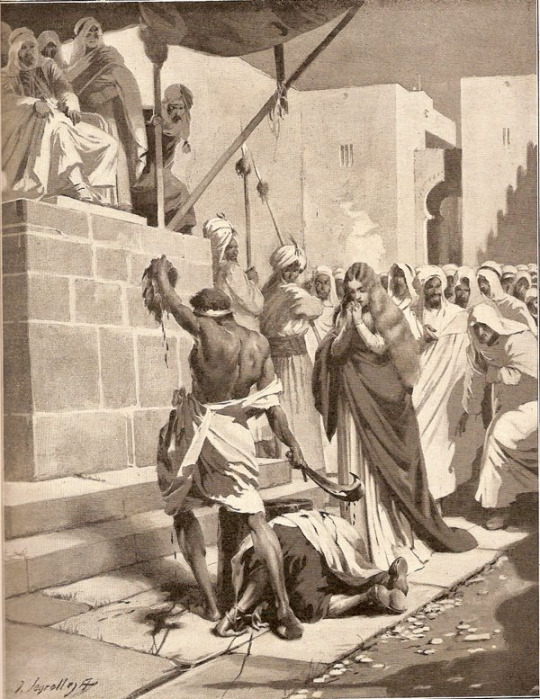
Contrary to what scholar consensus teaches, the Iberian Peninsula occupied by Arabs and the Moors was not an paradise of coexistence between people of different faiths and multicultural equality. This is thoroughly debunked in the book The Myth of the Andalusian Paradise by Dario Fernandez-Morera using the Arabic sources (NOT propaganda written by the infidels) to expose the true picture of Islamic Spain, which (among other things) brags about the wholesale destruction of churches the slaughter of Christian prisoners, praise the crucifixion of apostates, and texts advising Muslims how to collect the tax from non-believers. (Make them stand before Muslims sitting on a raised platform, call them “enemy of Allah” and then push them around for the amusement of any Muslim “who want[s] to enjoy it”).
Christians and Jews were allowed to practice their religion in peace, but this condition came with several fine prints. Non-Muslims had to accept the status of dhimmis which made them effectively second-class citizens. This condition was known as the Pact of Umar and the restrictions imposed on Christians and Jews were as follows.
Prohibition against rebuilding destroyed churches, by day or night, in their own neighborhoods or those situated in the quarters of the Muslims.
Prohibition against hanging a cross on the Churches.
Muslims should be allowed to enter Churches (for shelter) in any time, both in day and night.
Obliging the call of prayer by a bell to be low in volume.
Prohibition of Christians and Jews against raising their voices at prayer times.
Christians were forbidden to show their religion in public, or to be seen with Christian books or symbols in public, on the roads or in the markets of the Muslims.
Palm Sunday and Easter parades were banned.
Funerals should be conducted quietly.
Prohibition against burying non-Muslim dead near Muslims.
Prohibition against raising a pig next to a Muslims neighbor.
Christian were forbidden to sell Muslims alcoholic beverage.
Christians were forbidden to provide cover or shelter for spies.
Prohibition against telling a lie about Muslims.
Obligation to show deference toward Muslims. If a Muslim wishes to sit, a non-Muslim should be rise from his seats and let the Muslim sit.
Prohibition against preaching to Muslims in an attempt to convert them from Islam.
Prohibition against preventing the conversion to Islam of some one who wants to convert.
The appearance of the non-Muslims has to be different from those of the Muslims: Christians had to wear blue belts while Jews yellow belts (Yep, nothing Nazi-like about that)
Prohibition against adopting a Muslim title of honor.
Prohibition against engraving Arabic inscriptions on signet seals.
Prohibition against any possession of weapons.
Non-Muslims must host a Muslim passerby for at least 3 days and feed him.
Non-Muslims prohibited from buying a Muslim prisoner.
Prohibition against taking slaves who have been allotted to Muslims.
Prohibition against non-Muslims to lead, govern or employ Muslims.
If a non-Muslim beats a Muslim, it’s permissible to kill them.
The worship places of non-Muslims must be lower in elevation than the lowest mosque in town.
The houses of non-Muslims must not be taller in elevation than the houses of Muslims.
As Fernandes-Morera quotes the following passage from another contemporary historian:
“It is important to understand that medieval Islamic civilization had a different attitude toward slavery than that seen in Western Europe. Slaves were much better treated and their status was quite honorable. Furthermore, there were many career opportunities open to a skillful mamluk (slave soldier), and the higher standards of living available in the Islamic Middle East, meant there was often little resistance to being taken (as a slave) in Central Asia and south-eastern Europe.”
One can certainly imagine the throngs of girls and boys in Greece, Serbia and Central Asia clamoring to be taken away from their families to be circumcised, to become sexual slaves, or to be castrated to guard harems as eunuchs, or, in other cases, to be raised in barracks with the sole purpose of becoming brainwashed slave-soldiers.
Islamic Spanish society was also heavily dependent on slaves. For example, Abd al-Rahman had 3,750 slaves in his court, 6,300 sexual slaves in his harem, and 13,750 slave soldiers. Furthermore, slaves were a major export of the kingdom, particularly eunuchs (castrated Christian males) since sex segregation is an important aspect in Islam, eunuchs were considered harmless to women and integral to interact with them. Racism was also heavily embedded in their society - Africans were described as fickle, foolish and ignorant and Arabs valued white slave girls at almost 15 times that of African slave girls.
In Moorish Spain, sharia law was the law of the land which the specific form was the Maliki school of Islamic jurisprudence (which is prominent in North Africa). The Maliki school, far from being particularly liberal and tolerant, is one of the more conservative schools though not the most conservative one (the dubious honor goes to the Hanbali school, predominant in the Arabian Peninsula). The Maliki school includes many niceties like female genital mutilation (even for adult sexual slaves) and banned musical instruments, singing, paintings and sculptures. The law even went so far as to order a man who bought a non-Muslim sex slave and discovered she was a singer to return her (WTF!). Obviously, as Fernandez-Morera admits, the elites in Islamic Spain (as all over the world) often ignored the law. Non-Muslim slave singers and dancers are tolerated and even coveted. However, he is right to remind his readers that lapses in the application of law do not constitute a positive culture–much less a shining example of “paradise.”
Even under such conditions, bloody persecutions still happened against non-Muslims minorities. In 1066, a Muslim mob massacred the Jewish community of Granada because their rabbi Joseph ibn Naghrella became the vizier to the emir Badis al-Muzzafar, crucifying him and killed over 4,000 people in one day. For Christians, there were the 48 Martyrs of Córdoba who were executed under sharia law for charges of blasphemy or apostasy.
Perfectus - April 18, 850. A priest in Córdoba beheaded for denouncing Islam.
Isaac - June 3, 851. Born to a wealthy Córdoban family, he was well educated and fluent in Arabic which helped him rise quickly to the position of exceptor rei publicae in the Moorish government. He resigned in order to become a monk at his family’s monastery of Tábanos, a few miles from Córdoba. One day he left his retreat and returned to the emir’s palace where he proclaimed his faith in Christ in front of the court. He was arrested and subsequently beheaded.
Sancho - (also known as Sanctius, Sancius) June 5, 851. Born in Albi in Septimania (modern-day France), he was taken to Córdoba in Al-Andalus as a prisoner of war, educated at the royal court, and enrolled in the guards of the Emir. He was executed by impalement for his refusal to embrace Islam.
Peter, Walabonsus, Sabinian, Wistremundus, Habentius and Jeremiah - June 7, 851. Peter was a priest; Walabonsus, a deacon; Sabinian and Wistremundus, monks of St Zoilus in Córdoba in Al-Andalus; Habentius, a monk of St Christopher’s; Jeremiah, a very old man, had founded the monastery of Tábanos, near Córdoba. For publicly denouncing Muhammad they were executed under Abderrahman in Córdoba. Jeremiah was scourged to death; the others were beheaded.
Sisenandus - July 16, 851. Born in Beja in Portugal, he became a deacon in the church of St Acisclus in Córdoba. He was beheaded under Abd ar-Rahman II.
Paul of St Zoilus - July 20, 851. A deacon in Córdoba who belonged to the monastery of St Zoilus and who ministered to Christians imprisoned by the Muslims. He was beheaded.
Theodemir - July 25, 851. A monk executed in Córdoba in Al-Andalus under Abd ar-Rahman II.
Flora and Maria - November 24, 851. These two women were both the offspring of marriages between a Christian and a Muslim. In addition, Maria was the sister of Walabonsus, who had been executed earlier. Flora’s father, who died when she was very young, was a Muslim, and so her Christianity was legally defined as apostasy. Although Maria and Flora denounced Islam and proclaimed their Christian faith in court together, Maria was executed for blasphemy and Flora for apostasy.
Gumesindus and Servusdei - January 13, 852. Gusemindus, a parish-priest, and Servusdei, a monk, were executed in Cordoba under Abd ar-Rahman II.
Leovigild and Christopher - August 20, 852. Leovigild was a monk and pastor in Córdoba and Christopher a monk of the monastery of St Martin de La Rojana near Córdoba. They were executed in Córdoba under Abd ar-Rahman II.
Emilas and Jeremiah - September 15, 852. Two young men, the former of whom was a deacon, imprisoned and beheaded in Cordoba under the Emir Abderrahman.
Rogellus and Servus-Dei - September 16, 852. A monk and his young disciple executed in Córdoba for publicly denouncing Islam inside a mosque. They were the first Christian martyrs executed under Muhammad I.
Fandilas - June 13, 853. A priest and Abbot of Peñamelaria near Córdoba. He was beheaded in Córdoba by order of Muhammad I.
Anastasius, Felix, and Digna - June 14, 853. Anastasius was a deacon of the church of St. Acisclus in Córdoba, who became a monk at nearby Tábanos. Felix was born in Alcalá of a Berber family, became a monk in Asturias but joined the monastery at Tábanos, hoping for martyrdom. Digna belonged to the convent there.
Benildis - June 15, 853. Anastasius’ execution inspired this woman of Cordoba to choose martyrdom herself the next day. Her ashes were thrown into the Guadalquivir.
Columba - September 17, 853. Born in Córdoba and a nun at Tábanos, she was detained with the rest of the nuns, to prevent them from giving themselves up to the courts, when the Emirate closed the monastery in 852. She escaped, openly denounced Muhammad and was beheaded.
Pomposa - September 19, 853. Another nun, from the monastery of San Salvador at Peñamelaria. She escaped the imprisonment of the nuns, went before the court and was executed, despite protests from her fellow nuns.
Abundius - July 11, 854. A parish priest in Ananelos, a village near Córdoba. He was arrested for having maligned Muhammad. Unlike most of the other martyrs, Abundius was betrayed by others and did not volunteer to face the Emir’s court. He was beheaded and his body was thrown to the dogs. His feast day is celebrated on July 11.
Amator, Peter and Louis - April 30, 855. Amator was born in Martos, near Córdoba, where he was an ordained priest. Together with a monk named Peter and a layman called Louis (Ludovicus), the brother of the previous martyr Paul, he was executed by the Emirate for blaspheming Islam.
Witesindus - (also known as Witesind) 855. A Christian layman from Cabra, who had converted to Islam but later recanted; he was executed for apostasy.
Elias, Paul and Isidore - April 17, 856. Elias, born in Beja in Portugal and a priest in Córdoba, was executed in his old age by the Moors, together with the young monks Paul and Isidore, two of his students.
Argymirus - (also known as Argimirus, Argimir) June 28, 856. Argimir, a nobleman from Cabra, was Emir Muhammad I’s censor. He was deprived of his office on account of his faith and became a monk. He was accused by others of having insulted the prophet Muhammad and publicly proclaimed the divinity of Jesus. Argimir was offered mercy if he renounced Christianity and professed Islam; he refused, and was executed.
George, Aurelius and Natalia; Sabigotho, Felix and Liliosa – July 27 c. 852. Martyrs in Córdoba under Emir Abd ar-Rahman II. Aurelius and Felix, with their wives, Natalia and Liliosa, were Iberians whose family backgrounds, although religiously mixed, legally required them to profess Islam. After given four days to recant, they were condemned as apostates for revealing their previously secret Christian faith. The deacon George was a monk from Palestine who was arrested along with the two couples. Though offered a pardon as a foreigner, he chose to denounce Islam again and die with the others.
Aurea (also known as Aura) – July 19, 856. Born in Córdoba in Al-Andalus and a daughter of Muslim parents. She witnesses the execution of her brothers, Adolphus and John on 27 September 822 (their feast day).In her widowhood she quietly became a Christian and a nun at Cuteclara, where she remained for more than twenty years. She was discovered by Muslim relatives, brought before a judge, and renounced her Christianity under duress. However, she regretted this, and continued to practice Christianity in secret. When her family discovered this, she was again brought before a court, refused to repent a second time, and was executed.
Rudericus (Roderick) and Salomon (Solomon) – March 13, 857. Roderick was a priest in Cabra who was betrayed by his Muslim brother, who falsely accused him of converting to Islam and then returning to Christianity (i.e. apostasy). In prison he met his fellow-martyr, Salomon. They were both executed in Córdoba.
Sandila (also known as Sandalus, Sandolus, Sandulf) – September 3 c. 855. Executed in Córdoba under the Emirate
Eulogius of Cordoba – March 11, 859. A prominent priest in Córdoba Al-Andalus during this period. Outstanding for his courage and learning, he encouraged some of the voluntary martyrs and wrote “The Memorial of the Saints” for their benefit. He himself was executed for aiding and abetting apostasy by hiding and protecting a young girl St. Leocritia that had converted from Islam.
Leocritia (also known as Lucretia) – March 15, 859. A young girl in Córdoba. Her parents were Muslims, but she was converted to Christianity by a relative. On Eulogius’s advice and with his aid, Leocritia escaped her home and went into hiding. Once found, both were arrested. Eulogius, after years of being in and out of prison and encouraging voluntary martyrdom, was executed for proselytization, and Leocritia for apostasy.
To quote one such poet of the time, Abu Ishaqa, about the massacres of infidels:
Do not consider it a breach of faith to kill them, the breach of faith would be to let them carry on. They have violated our covenant with them, so how can you be held guilty against the violators? How can they have any pact when we are obscure and they are prominent? Now we are humble, beside them, as if we were wrong and they were right!
The Consequences of these Persecutions
Because they were fighting a merciless enemy, the Iberian Christians had to adopt a “militant holy warrior” to counter this menace. It was best exemplified with Alonso Pérez de Guzman, an Spanish nobleman whose city was being besieged by Arabs. When they captured his son and threatened to kill him unless if he surrendered the city what did he do?
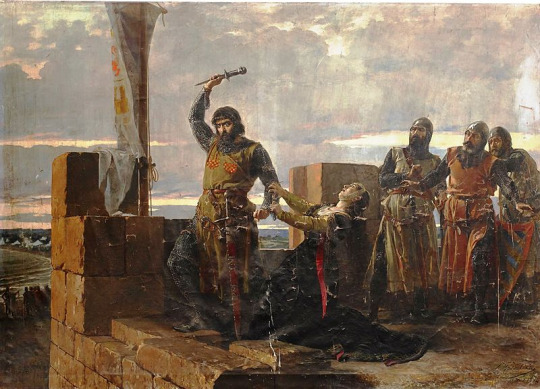
He threw them a knife so they could kill him with it.
"I did not beget a son to be made use of against my country, but that he should serve her against her foes. Should Don Juan put him to death, he will but confer honour on me, true life on my son, and on himself eternal shame in this world and everlasting wrath after death."
On the conclusion of Iberian victory over the Moors, the Iberian powers, Spain and Portugal didn't stop their warring against the Muslims solely in their homelands—they extended the conflict against Islam overseas. The Spanish under the Habsburg dynasty soon became the champions of Roman Catholicism in Europe and the Mediterranean against the encroaching threat of the Ottoman Empire. In a similar vein, the Portuguese also extended the Reconquista, this time against Muslim states overseas. The conquest of Ceuta marked the beginning of Portuguese expansion into Muslim Africa. Soon, the Portuguese also went into conflict with the Ottoman Caliphate in the Mediterranean, Indian Ocean and Southeast Asia as the Portuguese conquered the Ottomans' allies: the Sultanate of Adal in East Africa, the Sultanate of Delhi in South Asia and the Sultanate of Malacca in Southeast Asia. Meanwhile, the Spanish also went to war against the Sultanate of Brunei in Southeast Asia. The Spanish sent expeditions of Christianized Aztecs from Mexico to conquer and Christianize the Philippines, then a territory of the Sultanate of Brunei. Brunei itself was assaulted during the Castilian War. Spain also went to war against the Sultanates of Sulu, Maguindanao, and Lanao in the Spanish-Moro Conflict. The primary inspiration for these wars against Muslim states overseas was the Reconquista.
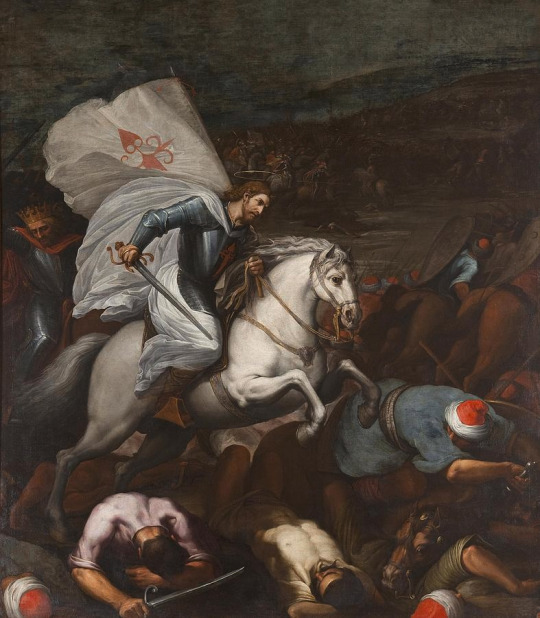
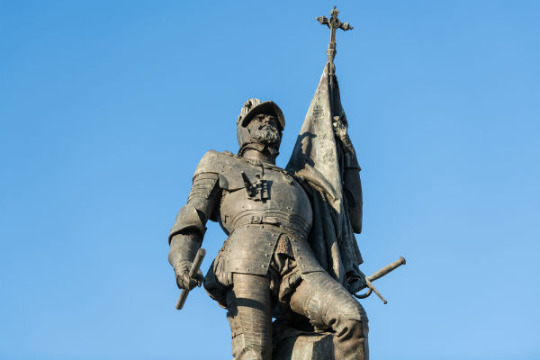
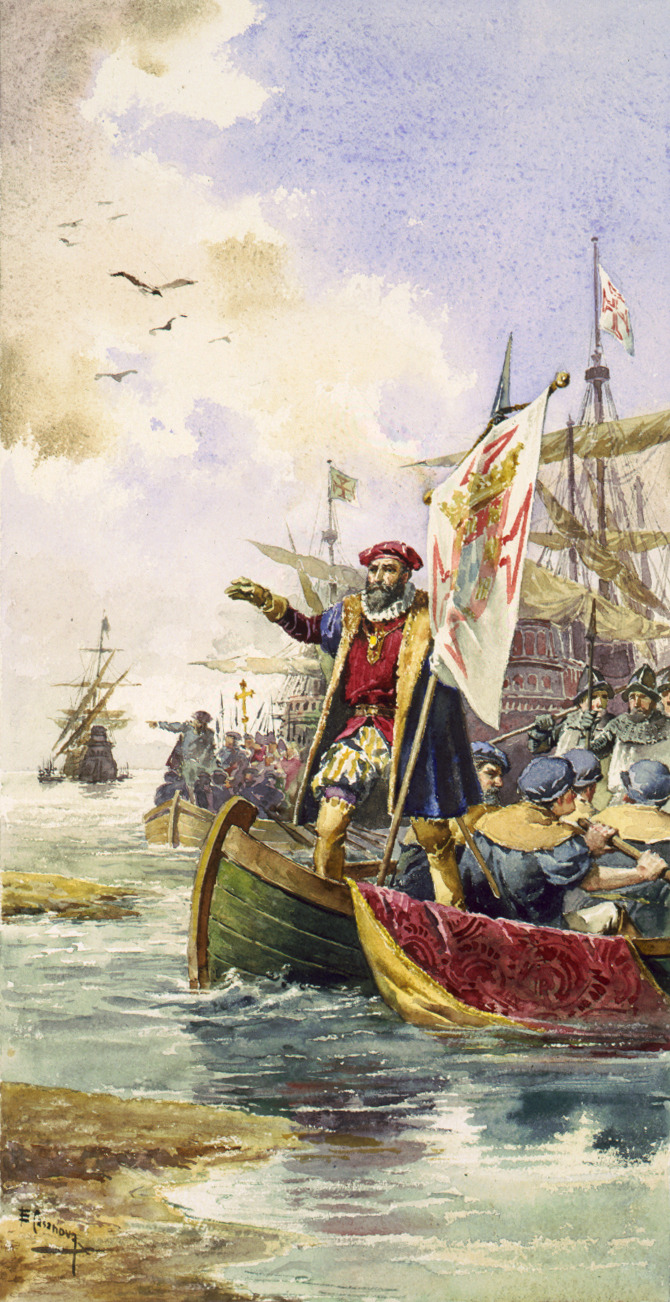
Now do you see why that had to happen?
379 notes
·
View notes
Link
history of audiobooks : The Myth of the Andalusian Paradise by Dario Fernandez Morera | History
Listen to The Myth of the Andalusian Paradise new releases history of audiobooks on your iPhone, iPad, or Android. Get any BOOKS AUDIO by Dario Fernandez Morera History FREE during your Free Trial
Written By: Dario Fernandez Morera Narrated By: Bob Souer Publisher: Tantor Media Date: July 2016 Duration: 9 hours 32 minutes
#The Myth of the Andalusian Paradise: Muslims#Christians#and Jews under Islamic Rule in Medieval Spain#The Myth of the Andalusian Paradise Audiobook#Audiobook#History#Dario Fernandez Morera#Bob Souer
0 notes
Quote
Any “tolerant co-existence” you hear about in this culture is the consequence of legally-imposed limits and coercion. A simple test: Visigoth and later, Christian Spain and Spanish kingdoms produced female leaders and religious leaders. Did Islamic kingdoms? Where are the Muslim Isabellas and Teresas? Reading this book, I found myself wanting to explore the issue of Islam, Europe, knowledge and the Dark Ages more. He alludes to arguments that 1) Any European “Dark Ages” were deepened and exacerbated by continual Muslim attacks and disruptions of trade routes – which makes a lot of sense once you start thinking about it and 2) the much-vaunted “Muslim protection of ancient classical knowledge” is false – what really happened is that Christian monasteries in Muslim-conquered areas had retained that knowledge.
Amy Welborn, takeaway from The Myth of the Andalusian Paradise: Muslims, Christians and Jews under Islamic Rule in Medieval Spain.
18 notes
·
View notes
Photo

Acaba de llegar: The #Myth of the #Andalusian #Paradise. #Muslims, #Christians, and #Jews under Islamic Rule in #Medieval #Spain. El #Mito del #Paraíso #Andaluz. #Musulmanes, #Cristianos, y #Judíos bajo la Ley Islámica en la #España #Medieval. Hace tiempo me encontré con este mito en la introducción al #PoemadeMíoCid de cierta editorial. Desde entonces me interesó el tema. #book #Amazon 📖
#andalusian#mito#myth#musulmanes#judíos#poemademíocid#paraíso#españa#amazon#jews#medieval#paradise#christians#andaluz#cristianos#spain#book#muslims
1 note
·
View note
Link
The Multicultural Lie & The Myth of the Golden Age of Tolerance in Muslim Spain
Muslim Spain - The Myth of the Andalusian Paradise: Muslims, Christians, and Jews under Islamic Rule in Medieval Spain, by Dario Fernandez-Morera Here you can buy a book that will change the way you see history: http://ift.tt/2toYoXc Apologists for Islam never tire of referring to the “Golden Age” of tolerance that supposedly characterized seven centuries of Muslim dominated Spain. This fundamentally flawed assessment draws the wrong conclusion based on fragmentary evidence and distorts the larger picture. It ignores the reality of enormous destruction wrought by the three Arab-Berber Muslim invasions that repeatedly sought to hold on to control and rule over the indigenous peoples of Spain who had been reduced to second class citizens in their own homeland. http://ift.tt/1uTdsl8 via YouTube https://youtu.be/h3eOCVZmxnU
0 notes